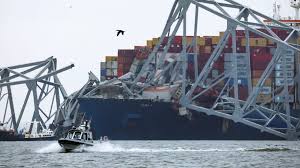
In the aftermath of the Baltimore bridge collapse incident involving the Francis Scott Key Bridge and the cargo ship Ship Dali, US federal safety investigators have made significant progress by recovering the data recorder, commonly referred to as the black box, from the ship. This development marks a crucial step forward in the ongoing investigation into the tragic event that occurred on Tuesday.
According to reports, a team from the National Transportation Safety Board (NTSB) successfully retrieved the data recorder from Ship Dali. NTSB Chair Jennifer Homendy emphasized the importance of this recovery, stating that the black box will aid investigators in piecing together a timeline of events leading up to the bridge collapse.
One of the focal points of the investigation is whether tainted fuel played a role in the mishap, a possibility that sources familiar with the probe have mentioned.
The data recorder has been sent to a lab for thorough examination, with Homendy expressing her intention to share the findings with the public later. Additionally, the FBI has ruled out any links between the collision and terrorism, providing clarity on the nature of the incident.
US Transportation Secretary Pete Buttigieg attributed the collapse to the excessive weight of the ship and its cargo load, describing the outcome as “almost-instant catastrophic.”
In parallel to the investigative efforts, the Maryland Transportation Authority has released dispatch recordings capturing the moments leading up to the tragedy. These recordings reveal the urgent attempts by authorities to halt traffic over the Key Bridge after the pilot of Ship Dali issued a mayday alert about the impending collision.
The audio recordings also shed light on the rescue operation, with officials working to locate and rescue construction workers who were on the bridge at the time of the collapse. While some workers have been rescued, others remain missing and are presumed to have lost their lives in the incident.
As investigations continue and details unfold, authorities are focused on understanding the sequence of events and implementing measures to prevent similar accidents in the future, underscoring the importance of safety and preparedness in critical infrastructure operations.
Sources By Agencies


